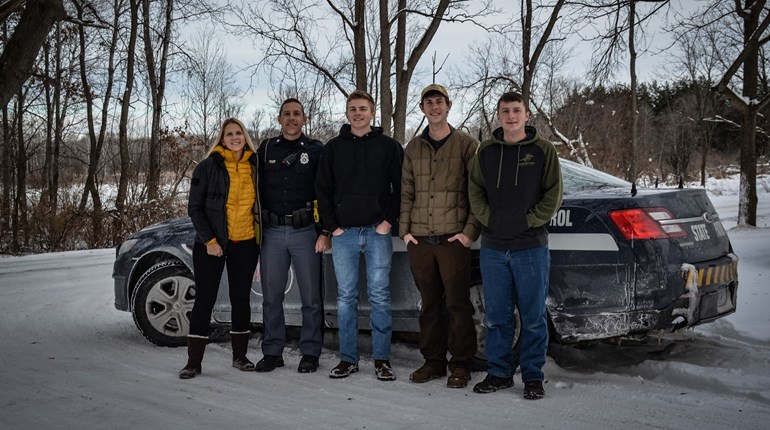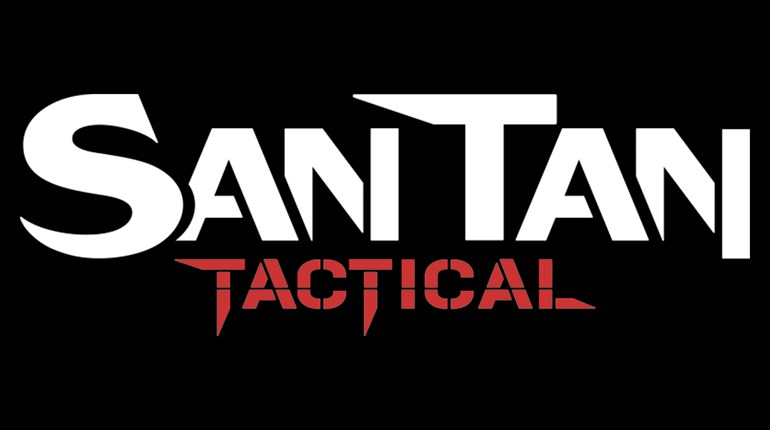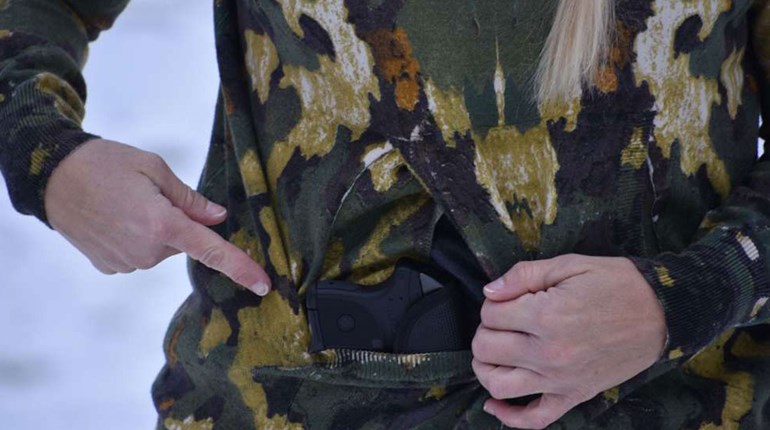
The most beautiful aspect of competing in shooting matches is building relationships with those who participate in and nurture these sports. The reality is that firearms sports participants tend to comprise an older demographic, and this leads to more consideration when planning events. I’m going to share a story of a situation in which the prepared, caring people you find involved in the shooting sports worked to save a man’s life. Experiencing this event, and having been present at other events that didn’t end as happily, showed me that there is room to improve our preparedness on the range. The focus on safety at the range must include more than firearm safety procedures. The real health hazards come from being in remote locations, away from EMS, and the everyday health risks that are a part of life.
Location, Location, Location
Typically, shooting competitions are held in somewhat remote locations. Unlike other team sports that might use a community field or park, shooting ranges are usually situated further out where there are fewer noise restrictions, and where there is enough land to accommodate live fire. Usually owners and clubs aim to be as considerate as possible of their neighbors. They want to be an asset to the community, not a bother. However, this does put vulnerable competitors such as the elderly or those with health concerns at risk of being exposed to temperature extremes and physical stresses, which may eventually require EMS attention that isn’t in close proximity.
Shift Your Safety Focus
Most safety on the range focuses on trauma, with the basic understanding that people are working with firearms. We have to be serious, we have to be safe, but we can enjoy firearms. People enjoy racetracks and racecars; shooting matches with timed components are very similar, and by the numbers, far less risky than racing around in a vehicle. But if we confine our focus solely on the potential for injury from a firearm, we are putting ourselves at risk for the more likely everyday health problems. Being in remote locations and focusing on “worst case” injuries, poses a threat to the health of aging shooters.
No. 1 in America
The number one killer in America is heart disease. This is simply a fact of life. I have been at three matches in the last two years where someone has had a heart attack. Only one of those people survived. I want to share some thoughts on what people did right, and how ranges can take the same precautions other sports take when it comes to access to emergency care.
Immediate Access
As a young adult, I worked for eight years as a lifeguard on a lake and began teaching CPR and First Aid to our community. Even in the mid- to late 90s, it was becoming clear that having a defibrillator on site was the biggest predictor of surviving a heart-related incident. According to the American College of Cardiology, the only effective treatment for Sudden Cardiac Arrest (SCA) is to restore the heart’s normal rhythm by using an Automated External Defribillator to deliver a shock to the heart.
Every minute without treatment, the victim has a 7 percent to 10 percent lower chance of survival. That is something to think on! If your EMS will take 10 minutes to arrive, and you need an AED, your chance of surviving is 30 percent or less. Those are not good chances. In light of this information, I think back to the several instances of heart attacks at matches where the person did not survive. They were good people, partaking in something they enjoyed. They had friends who cared deeply for them and tried their best to save their lives. We can honor them by building our ranges and emergency action plans with specific attention to response times, and including AEDs in our first aid kits. These $600-$800 items—far less than many in this demographic pay annually for life insurance—could save your life or someone else's. I’m going to share the story of a life saved by one, because I saw it firsthand.
Jack’s Story
The following is my summary of a written account shared by the firefighter who came to the immediate aid of a gentleman named Jack, who suffered a heart attack in May of 2020.
Around 7:45 a.m. at a shooting match in rural Missouri, the match director, Matt, noticed Jack collapse. Matt called for help and anyone with medical training. Nearby there were a firefighter of 15 years (Shaun) who holds an EMT-B certification; an LEO with EMT training (Adam); and a former corrections officer (Andrew). Additionally, the fireman’s wife and I, as well as another bystander named Anna, ran over to help. Matt called 9-1-1 and went to meet them at the entrance to the range. Other match staff and bystanders worked to keep access to the area clear for EMTs to arrive. The entire range went cold.
 Jack appeared to be having a seizure. Shaun, Adam and Andrew began assessing vitals. After a few minutes of seizing, no one could find a pulse, and Jack started turning grey. Shaun immediately began CPR chest compressions. Anna said she had an AED and CPR mask in her first aid bag. While Shaun continued compressions, and Andrew gave breaths, Anna connected the AED leads and powered it on. The AED analyzed Jack’s heart rhythm, and a shock was delivered. Still, there was no pulse, and Shaun continued compressions. After a minute of CPR, Jack made an effort to breathe. Finally, they found a pulse and Shaun was able to stop compressions. The rest of us helped take notes for EMS; I recorded the time the defibrillator shocked, as well as Jack’s heart rate, which was monitored by Anna. Adam assessed Jack’s pupil reaction, and after a minute or two, Jack’s breathing started to calm and he attempted to speak. He kept trying to crack jokes about how unreal this was, and within a few minutes a local firefighter arrived and put Jack on oxygen. The Ambulance arrived minutes later and took Jack to the nearest hospital with a cardiac unit, accompanied by Jack’s friends.
Jack appeared to be having a seizure. Shaun, Adam and Andrew began assessing vitals. After a few minutes of seizing, no one could find a pulse, and Jack started turning grey. Shaun immediately began CPR chest compressions. Anna said she had an AED and CPR mask in her first aid bag. While Shaun continued compressions, and Andrew gave breaths, Anna connected the AED leads and powered it on. The AED analyzed Jack’s heart rhythm, and a shock was delivered. Still, there was no pulse, and Shaun continued compressions. After a minute of CPR, Jack made an effort to breathe. Finally, they found a pulse and Shaun was able to stop compressions. The rest of us helped take notes for EMS; I recorded the time the defibrillator shocked, as well as Jack’s heart rate, which was monitored by Anna. Adam assessed Jack’s pupil reaction, and after a minute or two, Jack’s breathing started to calm and he attempted to speak. He kept trying to crack jokes about how unreal this was, and within a few minutes a local firefighter arrived and put Jack on oxygen. The Ambulance arrived minutes later and took Jack to the nearest hospital with a cardiac unit, accompanied by Jack’s friends.
The Good Things That Happened
Thanks to Matt, there was immediate awareness of the situation, and in turn, immediate action by those with the skills and knowledge to help. Anna’s AED was employed within the first few minutes of loss of heartbeat. Bystanders behaved responsibly by keeping the way clear for emergency vehicles. Those tending to Jack also ensured the most swift and efficient transfer to EMS by gathering notes on his onsite treatment and a ready-made plan for who would accompany him to the hospital.

The woman with the defibrillator is Anna Taylor (right, with Jack), CEO of Dene Adams, a woman’s concealed-carry holster company. Earlier, Anna and her family decided to take a first aid and CPR class, and that decision is the reason why Jack is still with his own family. The quick alert to the situation, the call to 9-1-1, and action by the kind-hearted people who put the defibrillator to use resulted in the best possible outcome. Had the AED been on the other end of the range, or more than a couple minutes away, this might be a very different story.
Lessons
How can we learn from Jack’s situation as compared to others? Other instances of sudden cardiac arrest on the range that I know of involved the same immediate response by people who care. The difference is that they didn’t have the same tools. The time it takes for EMS to arrive at smaller local clubs or even large matches is too long when every minute puts the person in more danger. Anna’s choice to buy an AED saved a life. It is important to acknowledge the time it took to retrieve the device as well. Anna’s was only yards from where Jack collapsed. Immediate access to this important tool is key! Had it been in the backseat of a car on the other side of the property, it likely would have been a different outcome.
Creating More Stories Like Jack’s?
As participants in range activities and events in remote areas, we should be aware of the risks to the participants and spectators. If you don’t have the means to individually purchase an AED, consider working with your local club to purchase one that’s available for everyone in the case of an emergency. Petition your shooting sports organization to have one on hand at large events. At matches in which multiple areas are covered by rangemasters, perhaps more than one AED is the right choice. Sometimes an ambulance crew is invited to events. I recall several events that took place in pretty remote locations where an ambulance and crew were present, likely coordinated with local government officials, who are more familiar with how to stage EMS on site.
No matter the emergency protocol at your local range, it is important that we raise awareness for safety measures beyond firearm safety. Most clubs have a refrigerator or a vending machine, so a lifesaving appliance like an AED should be mandatory.

Take It To Heart
Another important piece of information I would like to disseminate is that you should not be afraid to act. Many states have Good Samaritan Laws that will keep you from being sued for rendering aid. If you don’t have medical training, at least help by controlling crowds, ensuring 9-1-1 HAS been called (it might have been missed in the chaos) and meeting EMS so they do not waste precious time. In this latest incident, I actually walked up to where I had a phone signal after the shock was given because nobody told me who had called 9-1-1 and I wanted to make sure they knew what was happening on the ground. Even if your way of helping is by keeping the family calm, don’t just stand by and think others have it handled. Look for what way you can help, even if it’s just staying out of the way.
About the Author: Becky Yackley competes in the shooting sports across the country and around the world with her husband and three sons. She has spent much of the last 20 years holding down the fort while her husband proudly serves our country in both the Marine Corps and state law enforcement. Her writing, blogging, and photography are ways that she shares her unique perspective on firearms, competition, hunting, and the Second Amendment, especially as it applies to mothers on their own. She grew up the daughter of a gunsmith, and with her siblings competed in NRA Highpower and Smallbore, and she has since competed in more disciplines than almost any woman involved in the shooting sports. From IPSC, USPSA, Bianchi Cup, 3 Gun and more, she enjoys sharing that to be proficient and knowledgeable with a firearm is within the reach of anyone! She’s the founder a 501c.3, 2A Heritage Ltd., and works with industry partners and other volunteers who share the ethos of bringing new youth into the shooting sports with personal commitment to safely sharing an historically American pastime.














































